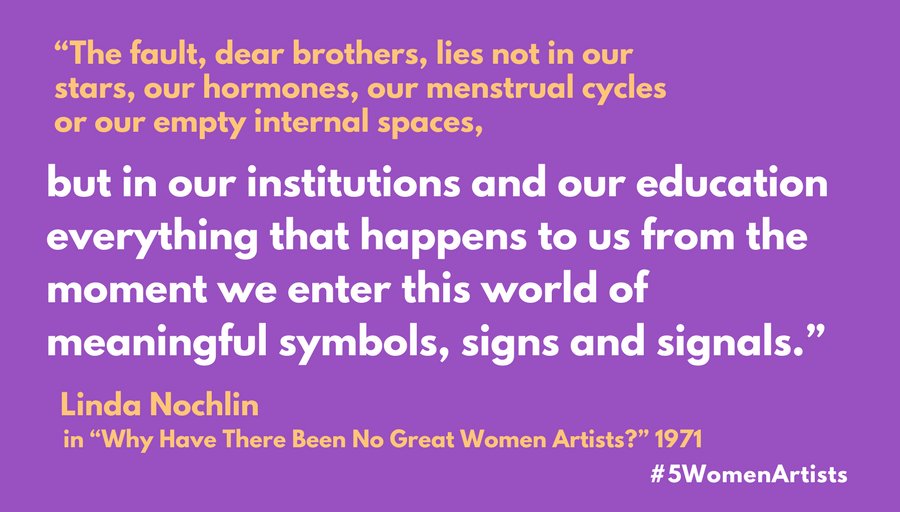
Shortly thereafter, she married the professor Philip H. Later, Nochlin attended Vassar College in upstate New York, graduating in 1951 with a degree in philosophy. “There were a lot of other people that were interested in art around me.”

“Being in New York, I had all these museums,” Nochlin told the College Art Association in June of this year. As a child, she took advantage of the many cultural institutions that New York City has to offer. “The fault, dear brothers, lies not in our stars, our hormones, our menstrual cycles or our empty internal spaces, but in our institutions and our education-education understood to include everything that happens to us from the moment we enter this world of meaningful symbols, signs and signals.”īorn Linda Weinberg in 1931, Nochlin grew up in Brooklyn. “hings as they are and as they have been, in the arts as in a hundred other areas, are stultifying, oppressive and discouraging to all those, women among them, who did not have the good fortune to be born white, preferably middle class and, above all, male,” Nochlin wrote in her essay. Nochlin is best known for her pioneering 1971 essay “ Why Have There Been No Great Women Artists?”, in which she argued that societal forces-and not a lack of “genius” or inherent talent-had for centuries kept women artists from attaining the same professional success and regard as their male counterparts.


She was 86 years old, according to Andrew Russeth of ARTnews. Linda Nochlin, an esteemed art historian who sparked a new era of feminist criticism within her field, has died.


 0 kommentar(er)
0 kommentar(er)
